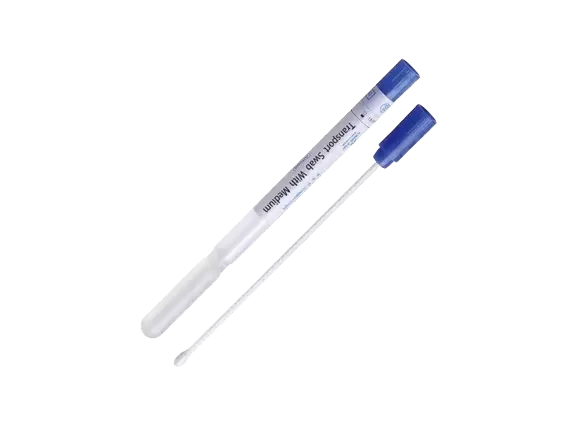Illuminating the Night: The Advanced Sensors That Enable Vision in Total Darkness
4 min readIn an age where technology continuously pushes the boundaries of human capability, the ability to see in total darkness has transitioned from the realm of science fiction to practical reality. This capability is primarily made possible through the use of advanced sensors that leverage various principles of physics and engineering. This article delves into the different types of sensors that enable users to navigate and perceive their surroundings in complete darkness, exploring their mechanisms, applications, and future potential.
- Understanding the Need for Night Vision
The necessity for night vision technology spans multiple industries, including military, security, wildlife observation, and even personal safety. In environments where light is scarce or non-existent, traditional vision is rendered ineffective. Thus, the development of sensors that can enhance visibility in such conditions has become crucial.
- Types of Sensors for Night Vision
2.1. Image Intensification Sensors
One of the most common technologies used for night vision is image intensification (I2). These sensors work by collecting ambient light, including infrared light that is invisible to the naked eye, and amplifying it to create a visible image.
- Mechanism: The process begins with a photocathode that converts incoming photons into electrons. These electrons are then accelerated through a vacuum tube and strike a phosphor screen, producing a visible image. The result is a green-hued view, which is easier for the human eye to process in low-light conditions.
- Applications: Image intensification is widely used in military applications, such as night vision goggles and scopes, as well as in surveillance and search-and-rescue operations.
2.2. Thermal Imaging Sensors
Thermal imaging sensors detect the infrared radiation emitted by objects, allowing users to visualize heat signatures rather than relying on visible light.
- Mechanism: These sensors utilize a special lens to focus infrared radiation onto a detector, which converts the thermal energy into an electronic signal. This signal is then processed to create a thermal image, where warmer objects appear brighter against cooler backgrounds.
- Applications: Thermal imaging is invaluable in various fields, including firefighting, building inspections, and wildlife monitoring, as it can detect living beings and heat sources even in complete darkness.
2.3. Low-Light Level Sensors
Low-light level sensors are designed to function effectively in environments with minimal light. Unlike image intensification, these sensors can operate in conditions where there is little to no ambient light.
- Mechanism: These sensors often employ advanced CCD (Charge-Coupled Device) technology, which is highly sensitive to low levels of light. They can capture images in near-darkness by amplifying the available light, resulting in clear images without the need for additional illumination.
- Applications: Low-light sensors are commonly used in security cameras, wildlife cameras, and in various consumer electronics, such as smartphones and digital cameras.
- The Role of Lidar and Radar in Low-Light Situations
While traditional night vision technologies focus on visual enhancement, Lidar (Light Detection and Ranging) and radar systems provide alternative methods for perceiving the environment in darkness.
3.1. Lidar Technology
Lidar uses laser light to measure distances and create detailed 3D maps of the environment.
- Mechanism: By emitting laser pulses and measuring the time it takes for the light to return after bouncing off an object, Lidar systems can construct a precise representation of surroundings, regardless of lighting conditions.
- Applications: Lidar is increasingly used in autonomous vehicles, robotics, and geographic mapping, providing crucial data even in total darkness.
3.2. Radar Technology
Radar systems utilize radio waves to detect objects and their distances, making them effective in various visibility conditions.
- Mechanism: Radar emits radio waves that reflect off objects, allowing the system to determine their location and speed based on the time delay of the returned signals.
- Applications: Commonly used in aviation, maritime navigation, and weather monitoring, radar technology is essential for safety and operational efficiency in low-visibility scenarios.
- Future Trends in Night Vision Technology
As technology continues to evolve, the future of night vision sensors looks promising. Innovations in artificial intelligence (AI) and machine learning are paving the way for smarter sensors that can interpret complex environments and provide real-time data analysis.
- Integration with Augmented Reality (AR): Future night vision systems may integrate AR, overlaying critical information onto the user’s field of view, enhancing situational awareness in low-light conditions.
- Miniaturization and Cost Reduction: Advances in materials science and manufacturing processes are likely to lead to smaller, more affordable night vision devices, making them accessible to a broader audience.
Conclusion
The ability to see in total darkness is no longer a distant dream but a reality made possible by a variety of advanced sensors. From image intensification and thermal imaging to Lidar and radar, these technologies are transforming how we interact with our environment in low-light conditions. As we look to the future, the continued development of these sensors promises to enhance safety, security, and exploration, illuminating the night in ways we have yet to imagine.



